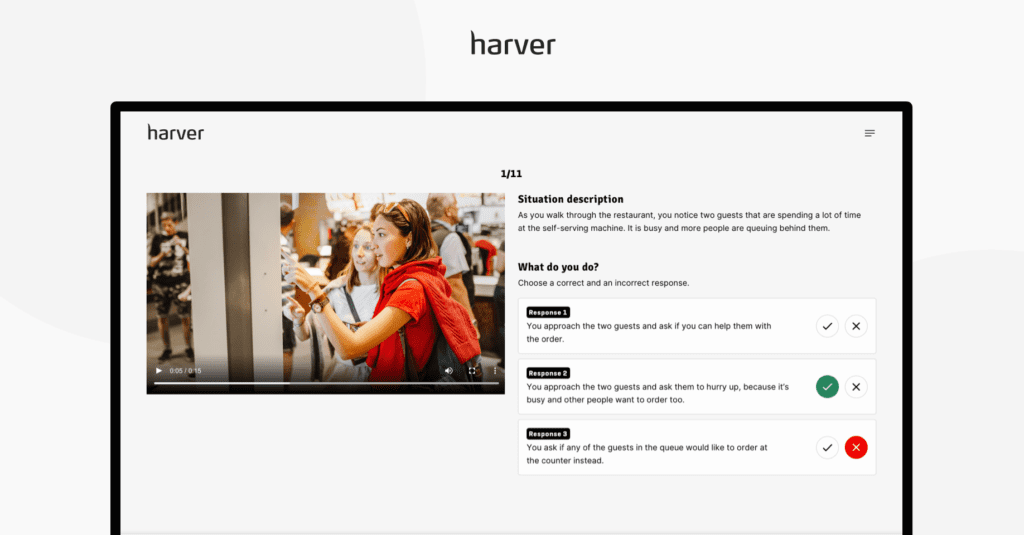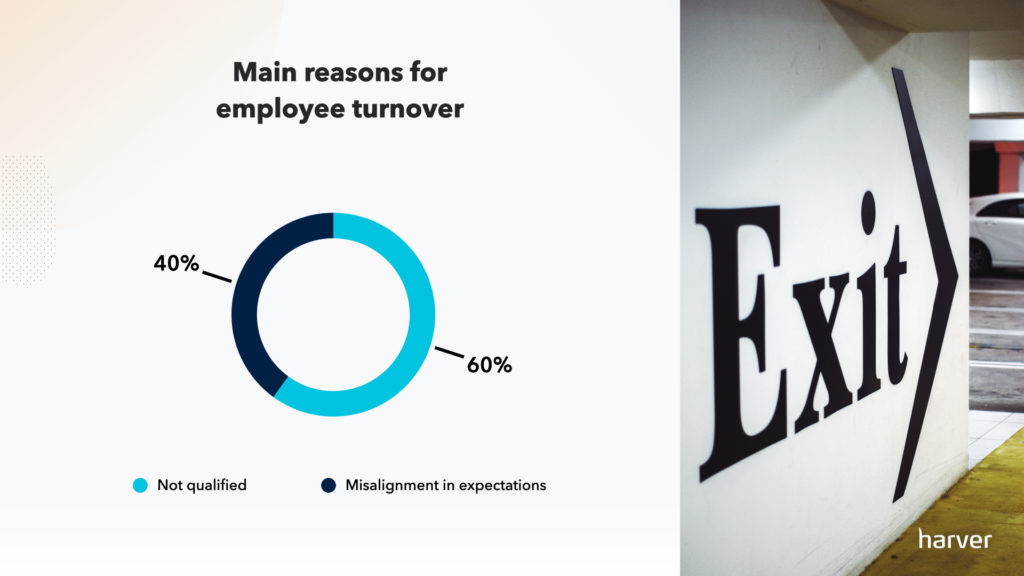
It can be a real struggle to accurately represent what a job really is like before the new hire starts. This is especially true if companies are only trying to show the positive sides of the job they’re hiring for.
Yet, for a candidate, accepting a new job is never an easy decision. Even if the interview process goes perfectly , many candidates still experience a lot of hesitation. After all, what if the actual job is nothing like the interview lead on?
While we all want to attract top-level candidates excited about the open position, not letting them in on the challenges or struggles can lead to unhappiness and early attrition down the road. That’s why it’s always important to give new hires and job candidates a realistic view of what the job will be like.
The fastest, easiest and most digital way to do this is through a realistic job preview (RJP).
And that’s exactly why we’ll take a look at the basics of RJPs today. What are they, how can they help, and most of all, how can you add a realistic job preview to your hiring process yourself?
A realistic job preview offers a realistic look into what a job is actually like – no sugar coating – showing both the positives and the negatives so the candidate can get a real feel for what skills and qualifications are needed on the job, as well as what a typical day would look like.
You’re letting your candidates know your expectations on the on hand. And they’re able to assess if this fits within what they’re looking for on the other. We’ve said it before – but a truly efficient recruitment process should be a two-way street. An RJP makes it so.
Also, establishing expectations ahead of time makes sure everyone is on the same page before the hiring process is complete and weeds out candidates that are not fully committed.
Before we get into why RJPs are important and how you can add them to your candidate selection flow, here’s a sample realistic job preview for the restaurant industry. This RJP comes in the form of a situational judgment test, but there are different types of RJPs that you can implement. We’ll detail them below.

Short answer: A realistic job preview ensures you’re getting the right candidate in your open position the first time around by letting candidates know exactly what the role they’re applying for entices.
Longer answer: When you’re not sugar-coating the position, new hires will know exactly what they’re agreeing to. This prevents confusion and unhappiness on the first day.
Think about it: Imagine you’ve just interviewed for what you believe is your dream job. The hiring manager, team, and CEO spent the entire interview process talking about the benefits, selling points, and key features of their open position.
And you were the perfect fit. You can’t wait to get started because you believe this will be a breeze. But then your first day comes. The work is nothing like they promised you, you’re expected to stay hours longer than you thought, and you can’t seem to really grasp what you’re supposed to be doing.
In other words, the jobs not quite what you thought. Misalignment of expectations is one of the main drivers for unhappiness amongst new hires after starting a new position.

While this may seem a bit dramatic, instances like this happen just about every day. Companies don’t fully disclose what a job is like and new hires are left upset that they agreed to a position that didn’t quite fit the image they had in their mind.
This leads to high employee turnover and negative reviews about the company, which in the long term, harms your employer brand. Moreover, you need to spend even more time trying to hire for the same position.
Needless to say, it’s pretty important that new hires know what they’re getting into when they start a new job. By being upfront about challenges and demands, candidates who aren’t interested in that level of work can leave the interview process earlier.
This helps you push the best candidates through while preventing you from wasting time on applicants who don’t fit your needs.
Think of a realistic job preview like a look behind the curtain. Typically, during an interview process, each party is on their best behavior. Everyone – company and candidate – is putting their best foot forward, trying to hide the little ticks that can make them difficult to work with.
And while you don’t want to go exposing all your dirty laundry, hiding everything creates an unrealistic image of who you really are.
By creating an RJP, applicants and candidates get to take a look at what it’s really like to work for your company. They get to see your inner workings , a nd they can choose to love you for them, or they can run for the hills.
Now that you have a comprehensive understanding of the ‘what’ and the ‘why’, it’s time for the really interesting stuff: the ‘how’.